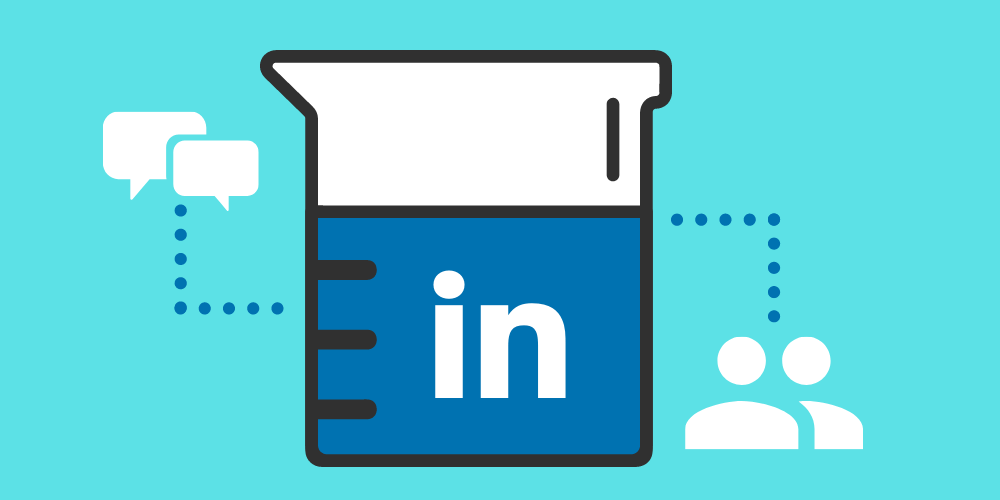10 Tips for Promoting Your Life Science Brand on LinkedIn
By Jordan Eller

This post is an adapted version of an article by Dave Gerhardt. To see more of Dave’s work, visit his author page on Privy.com
Social media is one of the most dynamic marketing channels available today, and out of all the different social media platforms, LinkedIn is arguably the best for professional networking and growing your life science brand.
However, many life science companies underestimate the power of LinkedIn, or fail to understand its potential. If you’re serious about expanding your digital footprint and engaging your target audience, this collection of LinkedIn tips is for you.
1) Know your audience
Knowing your audience is arguably the most crucial element of marketing, and it’s no different on LinkedIn. When it comes to B2B marketing, LinkedIn is king. Make sure that your marketing communication is tailored to your audience, and always try to deliver unique content that compels and engages them.
2) Understand that LinkedIn has changed
Social media is constantly evolving, and it’s paramount that you anticipate and capitalize on the shifting landscape of LinkedIn. It’s no longer a dusty, stuffy database of virtual resumes. Now, it’s a battleground of thought leadership and branding initiatives. If your life science brand doesn’t have a strong presence on LinkedIn, you can bet that your competitors do.
3) Consistency is more important than frequency
This is a subject that many marketers have trouble coming to grips with. There’s a common misconception that if you bombard your audience with content, you’ll see a massive amount of engagement. The truth is that consistency is more important than frequency. This means that if you can keep a regimented posting schedule, your audience will become familiar with your rhythm and you’ll cement your brand as a steadfast curator of valuable, unique content. Whether it’s 3 times per week or once per month, consistency is key.
4) Always reply to comments
Comments are the most distilled form of audience engagement. If your content is compelling people to comment, then the best thing you can do is to continue the conversation. Whether it’s a simple “Thank you for reading!” or developing a dialogue about your content, it’s crucial that you foster conversations around your content in order to cement your trustworthiness and promote your brand.
5) Remember that most people won’t see your LinkedIn content
Your goal isn’t to reach everyone in the world; your goal is to reach a concentrated subset of people that are likely to engage with your focused, specialized life science content. While LinkedIn is important, do not obsess over your posts. As long as you’re consistently delivering unique content to your target audience, you’re doing it right.
6) Focus on the subjects that move the needle
If one of your subjects generate a significant response, it’s time to double down. This is where data can help influence your content. Identify which topics are really resonating with your audience, and continue developing content around those topics. Similarly, identify which topics are falling flat, and either repurpose them to be more appealing, or discard them.
7) Don’t obsess over length
If you do a search for “how long should my posts be”, you’ll be inundated with hundreds of conflicting articles. Some people will say LinkedIn posts should be longer, others will say brevity is key. The truth is that length is arbitrary. Whether you want to write a 500+ word novella or a single punchy sentence, the only thing that matters is this: is your content compelling?
8) Use hashtags responsibly
Due to the more professional atmosphere of LinkedIn, hashtags are best used sparingly. At Forma, our specialty is the life science industry, so we’ll typically include hashtags like #lifesciences or #marketing. People are very sensitive to hashtag stuffing (the overuse of hashtags that are common on platforms like Instagram), so make sure you don’t overwhelm the user. Use hashtags to identify niches or concentrate your posts, such as clinical research organizations or contract medical organizations.
9) Engage with other LinkedIn posts
This is a central tenet of savvy social media management. Engaging with other users’ posts is one of the many ways you can promote your life science brand on LinkedIn. Whether that’s sharing a post from a partner or commenting on a thread from an industry thought leader, you should be taking advantage of any opportunity to get your life science brand name out there and into the public discourse.
10) Go with your data, or go with your gut?
It can be tempting to obsess over the analytics of your posts, but it’s important not to undermine the human element of LinkedIn. Spend less time poring over metrics like “custom button clicks” and spend more time replying to comments and fostering discussions about your content. This can be difficult for data-minded marketers, but the truth is that with LinkedIn, it’s often best to go with your gut.
LinkedIn can be a powerful tool for life science brands. By equipping yourself with these best practices and keeping your thumb on the pulse of how LinkedIn evolves, you’ll be positioning your brand for success both now and in the future.




